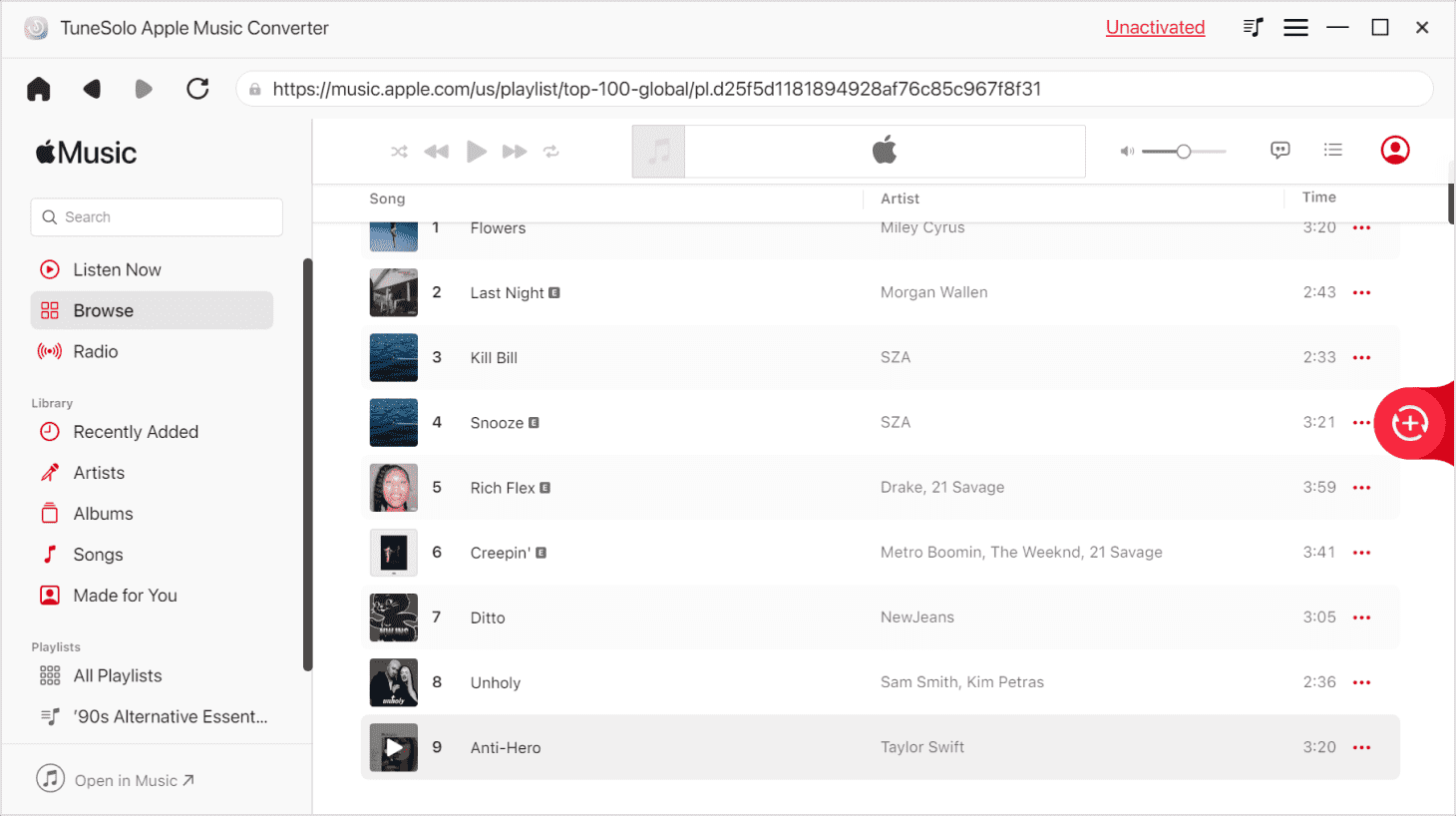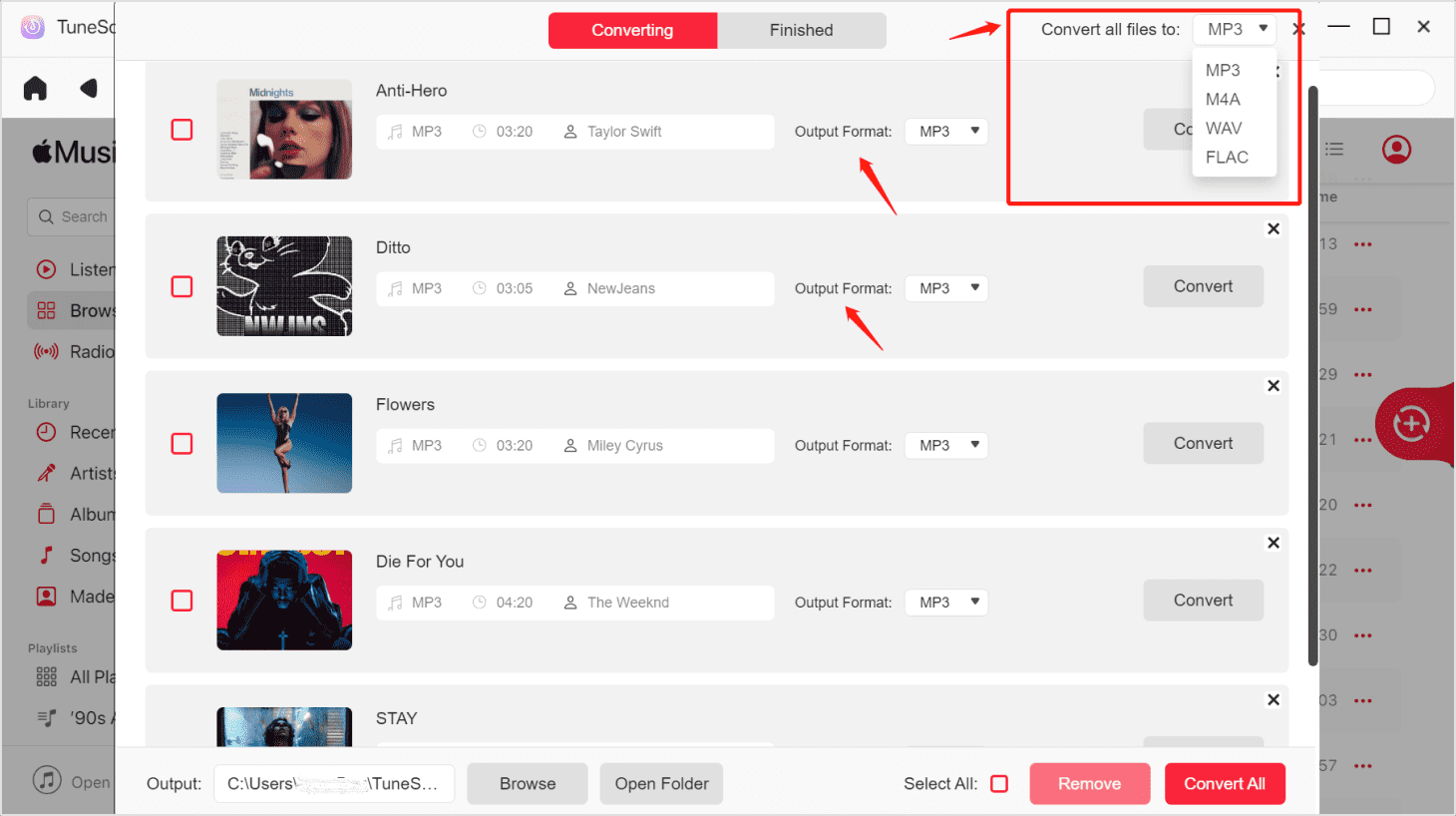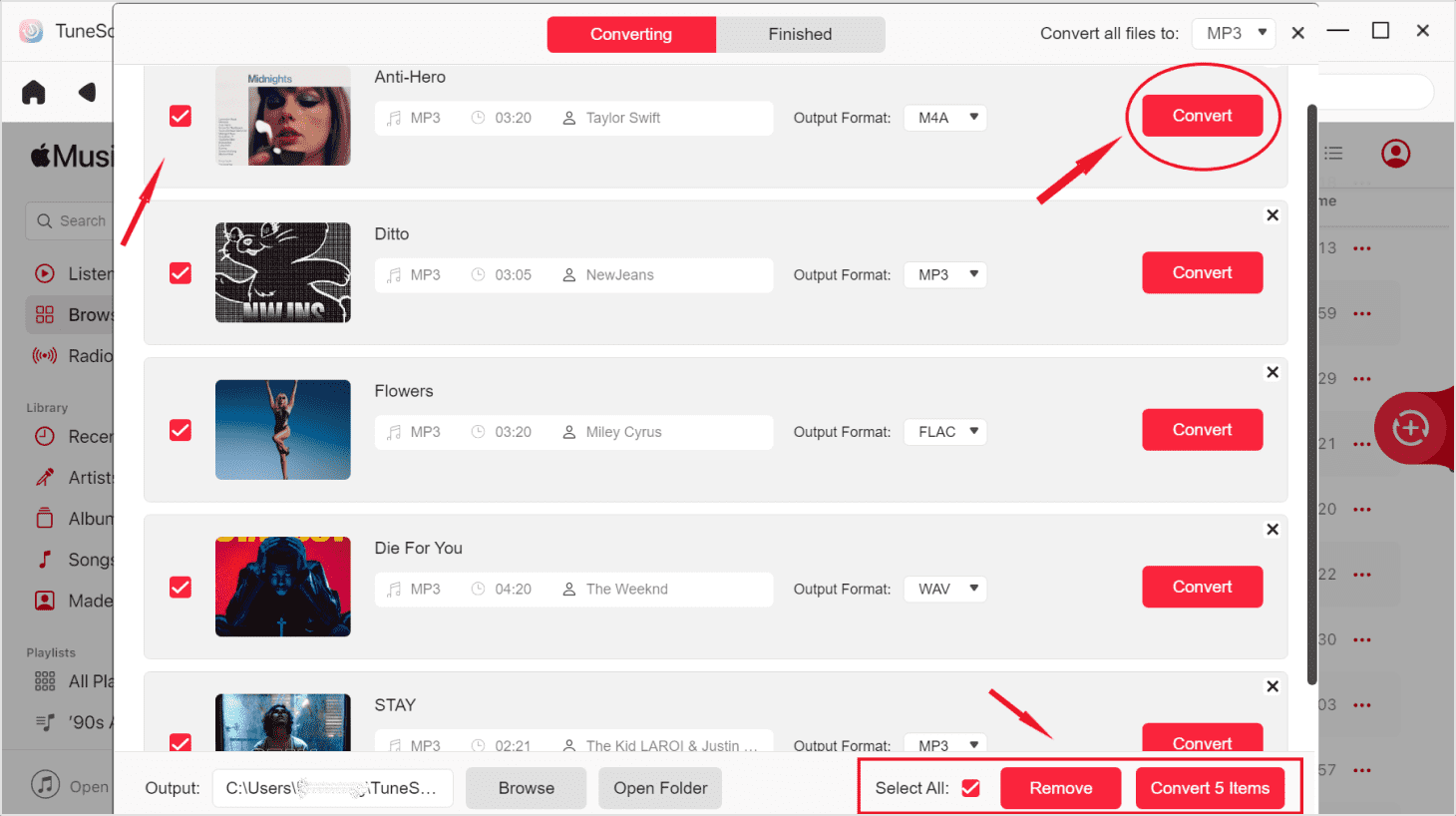There are those that think Amazon Music is the best, and there are those that are leaning more on Apple Music. Either way, there’s no denying that both have their own supporters, but sometimes, you just have to wonder which really is better among the two.
Considering how different the two are and how they each have their own pros and cons, it’s a bit difficult to really compare the two, but we’ll do it anyway.
This article will be what most people are waiting for, Amazon Music VS Apple Music consisting of comparisons between the different factors that decide which is better.
Article Content Part 1. Amazon Music vs Apple Music: An In-depth ComparisonPart 2. Amazon Music vs Apple Music: Which One Is the Best Music App?Part 3. Bonus Tip: How to Play Apple Music on Amazon Music?Part 4. Conclusion
Apple and Amazon are two of the largest technology companies in the world. Both Apple Music and Amazon Music have made some big changes in recent years. Apple Music introduced lossless music streaming and spatial audio support, while Amazon took the lossless capabilities of the Amazon Music HD tier and added high-fidelity capabilities to Amazon Music Unlimited at no additional cost. How do these two giants' music streaming services compare today? We'll take a closer look at a side-by-side comparison of Amazon Music vs. Apple Music.
Since the subscriptions and trials play a crucial role in attracting subscribers, we’ll start with this factor in our Amazon Music VS Apple Music comparison.
Subscription Plans. Both services have three basic plans. The first plan is for any particular individual which costs $9.99 a month for Amazon Music and $10.99 for Apple Music. The second level is the cheapest and was meant for students with a price of $4.99 a month and $ 5.99 respectively with Amazon Music and Apple Music. The last level is for a family which costs $14.99 a month for Amazon Music and $15.99 a month for Apple Music and this family package can accommodate exactly 6 members.
Special Subscriptions. However, Amazon has a wider range of offers for a subscription. If you’re already an Amazon Prime member, there’s a plan just for you that requires you to add $7.99 to what you’re currently paying and you can access Amazon Music on top of other Prime benefits. Also, if you have an Amazon Alexa device, you can pay only $3.99 a month to stream music, though it can only be used on that particular device.
Free Trial. Apple Music offers a free trial that can last up to 3 months that can be canceled so you don’t get charged. Of course, there’s also a free trial for Amazon Music users which lasts up to 30 days, which is a 2-month difference from what Apple Music offers, so Apple Music is the clear winner here, that is if we’re only talking about duration.
Trial Expiration. Amazon Music makes up by allowing users to still view the playlists that you had during the trial even after the trial ends, as opposed to Apple Music which leaves you empty-handed once the subscription or trial ends.
Weighing one against the other, there’s no clear winner. Apple Music’s subscriptions are simple, while Amazon Music has a lot of options to offer. If the situation permits, you can even subscribe for as low as $3.99. And in terms of the free trial, Apple Music is better for the short term due to the duration, but Amazon Music is better in the long run since you still have access to playlists after the expiration.
So for this factor of Amazon Music VS Apple Music, it might be a draw. But the price isn’t everything. There’s also the functionality, and that’s what we’ll talk about next.
Considering how you went out of your way to take a look at this article, you probably intend to pay for a subscription. And if I’m correct, this is so that you can download the songs to pc and listen to music offline.
That’s why this is a very crucial part of the Amazon Music VS Apple Music comparison. Which has better libraries and offline listening?
Below are some notes on Apple and Amazon Music’s libraries and offline listening features:
Libraries. Apple Music and Amazon Music both have a huge catalog that consisting of more than 50 million songs, and for that, they are similar in terms of “quantity”. As for offline listening, both services have a library that can store up to 100,000 songs.
Accessibility. Due to the iCloud feature of Apple Music, you can access all downloaded songs on the library on other devices as long as you login to the same Apple account. Amazon Music offers this feature as well, but it has a limit of 10 devices, but it’s quite rare to reach this limit for one user. You can access your Amazon Music library by going to a website through a browser, perfect for those who don’t want to install any app.
Library Management. While Apple Music allows you to manage individual songs AND a group of songs through playlists, Amazon only has the ability to let you manage individual songs, which is a bit inconvenient.
Additional Features. On top of having a wide variety of songs in its library, users also have the privilege of getting the exclusive new releases of artists that you may or may not know of as well as videos of their concerts and live performances. Unfortunately, it’s not very clear if Amazon Music offers the same privilege.
Objectively speaking, Amazon Music is badly beaten by Apple. Apple Music has the features of Amazon Music and more, so it’s clear who’s the winner for this part of Amazon Music VS Apple Music comparison.
It can be said that quality beats quantity, and sometimes, that proves to be true since having a large library is not enough to get more users. So how does Apple Music and Amazon Music fare in terms of streaming quality?
User Reviews/Ratings. When it comes to the ratings and reviews of the users, Apple Music is ranked 8th while Amazon Music ranked 18th. That means Apple Music wins this one, but this is just subjective and according to the opinions of the users.
Music Quality. As far as actual quality goes, here are some of the differences. Apple Music provides its full collection in AAC (Advanced Audio Codec) as the default setting.
Nonetheless, users have the option to enable lossless audio, utilizing Apple's proprietary Apple Lossless Audio Codec (ALAC). The entire collection is accessible in 16-bit/44.1kHz (referred to as Lossless Audio), and some tracks are offered in 24-bit/192kHz (High-Resolution Lossless Audio).
Similarly, Amazon Music offers a comparable feature, utilizing FLAC (Free Lossless Audio Codec). Lossless audio is designated as HD (16-bit/44.1kHz), while Ultra HD (24-bit/192kHz) is also available.
Immersive Sound. Apple offers spatial audio based on Dolby Atmos surround sound technology. Amazon Music also offers spatial audio music, with songs using Dolby Atmos and Sony's 360 Reality Audio. For both services, you'll need a supported device to take advantage of spatial audio.
At the end of the day, it depends on your preferences. The respective sound quality output of Amazon Music and Apple Music is comparable to lossless audio formats.
Apple Music. Considering how it’s a platform made by Apple, it’s natural to assume that all iOS devices will be supported. Additionally, it can be used on Mac and Windows PC. However, it cannot be run on Android and other mobile gadgets with a brand that’s not Apple.
Amazon Music. Compared to Apple Music, Amazon made it easier for the user to access the platform. Not only is it available to Android, it even supports iOS devices. Of course, it can also be run on Mac and Windows PC. You can even open a browser anywhere and access the platform right from the get-go.
Other Devices. While Apple Music has full support on iOS devices, Amazon Music has full support on Amazon devices such as Alexa, Echo, and more.
Countries. Since Apple Music is more renowned to people around the world, it became available to more than 100 countries and counting. Amazon Music, however, can only be accessed from 28 countries.
Since Amazon Music supports iOS devices, the compatibility of Apple Music becomes obsolete in this Amazon Music VS Apple Music comparison. Plus, the country supported doesn’t really matter since VPN is easily accessible nowadays. So the clear winner for this part is Amazon Music.
You should now have an idea of which is better because of this Amazon Music VS Apple Music comparison, but it ultimately comes down to your preferences.
Before we end this comparison, let’s take a look at some highlights of the features of Apple Music and Amazon Music that are unique to each other and hopefully get some info that we still haven’t discussed:
Free Trial and Subscription. Free trial lasts for three months, but once it expires, all content you have collected will be gone. The same happens after a subscription.
Libraries. Playlists are updated regularly and can be personalized by the user.
Streaming. The quality is average, but it can be streamed quickly due to the audio codec. Additionally, lyrics are available to the users during the streaming of a song.
Browser Streaming. Apple Music still hasn’t made it possible to stream through a browser with a website.
Integration. Siri will be integrated into whichever device you use for streaming Apple Music.
Free Trial and Subscription. Free trial only lasts up to 30 days, but you will keep your playlists even after the subscription or trial expires. They also offer more subscription plans.
Streaming. The music quality is quite high and is available in three main ranges, but the speed will depend on the quality.
Integration. Amazon devices such as Alexa, Echo, etc. are fully integrated into the Amazon Music platform
Browser Streaming. Users can stream music by going to a specific website.
You can clearly see that both have their own pros and cons, and that just means that neither of them is a league higher than the other. The Amazon Music VS Apple Music comparison is tight, and it all falls down to which you prefer.
With the above detailed comparison between Amazon Music and Apple Music, I think you now have your choice. But have you ever thought about playing Apple Music on the Amazon Music platform? If this idea has crossed your mind, then you must not miss the next part.
It appears that TuneSolo Apple Music Converter is described as a robust tool designed to facilitate the integration of Apple Music and Amazon Music. The software is capable of acquiring files from iTunes, including Apple Music, which can then be used to enable Apple Music playback on Amazon Music. For further details on this software and its features, you can click the button below.
Below are the main features of this software:
Having reviewed the previously mentioned article, it's evident that TuneSolo holds significant capabilities. Without delay, let's delve into the process of utilizing this software to enable Apple Music playback on Amazon Music.
Open the TuneSolo Apple Music Converter on your computer. Make sure iTunes is installed in the computer as it will be the source of the music. On the main page, there will be a list of music. Simply select the Apple Music songs that you want to convert by clicking on their box.

Below the list of songs are the output settings. Under here, choose the appropriate format, quality, and other settings for the selected Apple Music.

Once you’re done setting up the settings, click on the Convert button below. This might take a while, but ultimately, you will see the results under the Finished tab. Here you can check if you converted the right music and if it’s successful.

Once you’ve downloaded the Apple Music songs, go to Amazon Music and click the Upload button. Next, browse to where the downloaded songs are and select those songs. This will upload the said songs into the Amazon Music platform, allowing you to play Apple Music on Amazon.
Now that you’ve seen this Amazon Music VS Apple Music comparison, you should be able to determine which is according to your preferences, much less for your situation.
While they have differences, they are quite similar, so it’s a bit hard to know which is better. At the end of the day, all that matters is that you can listen to some quality music.
Copyright © 2025 TuneSolo Software Inc. All rights reserved.
Leave a comment
1.Your Name
2.Your E-mail
3.Your Review
Submit